
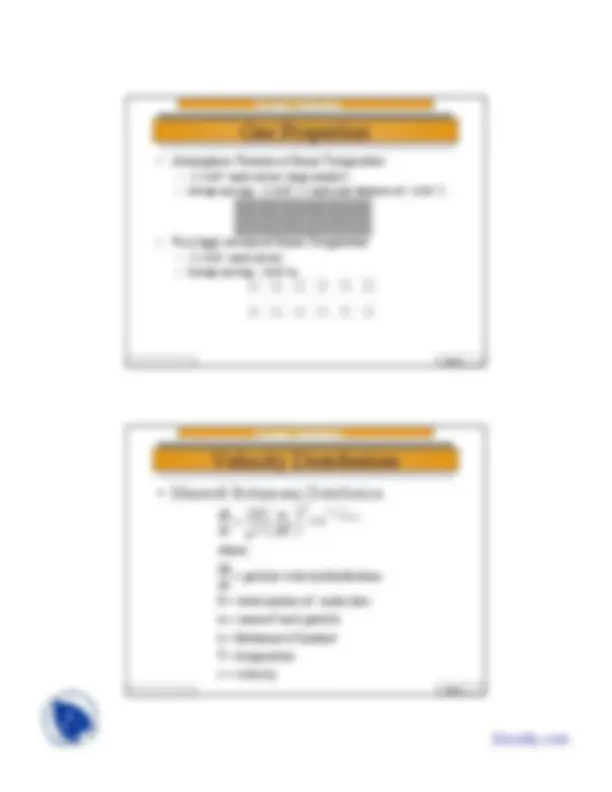
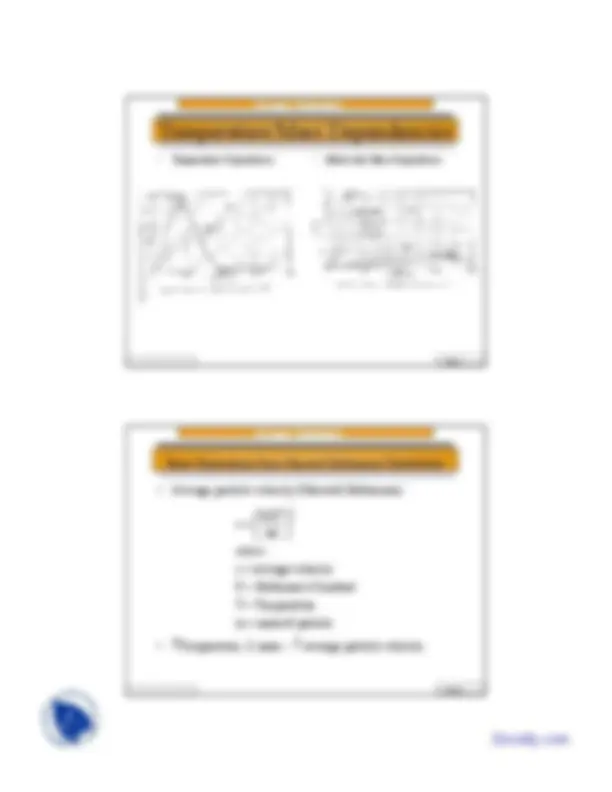
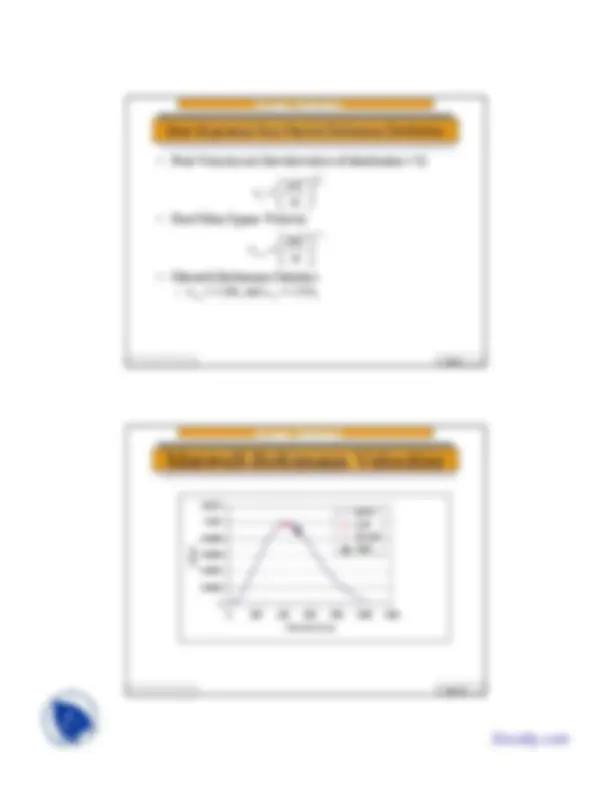
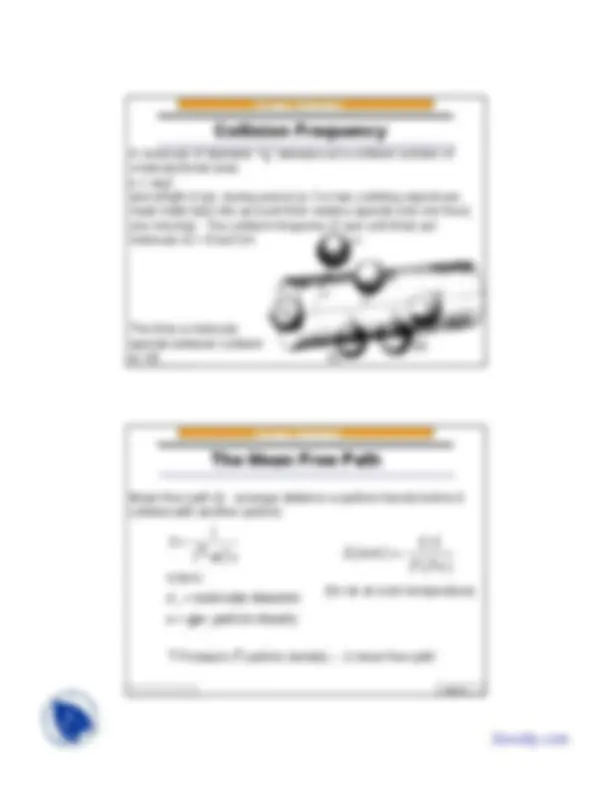
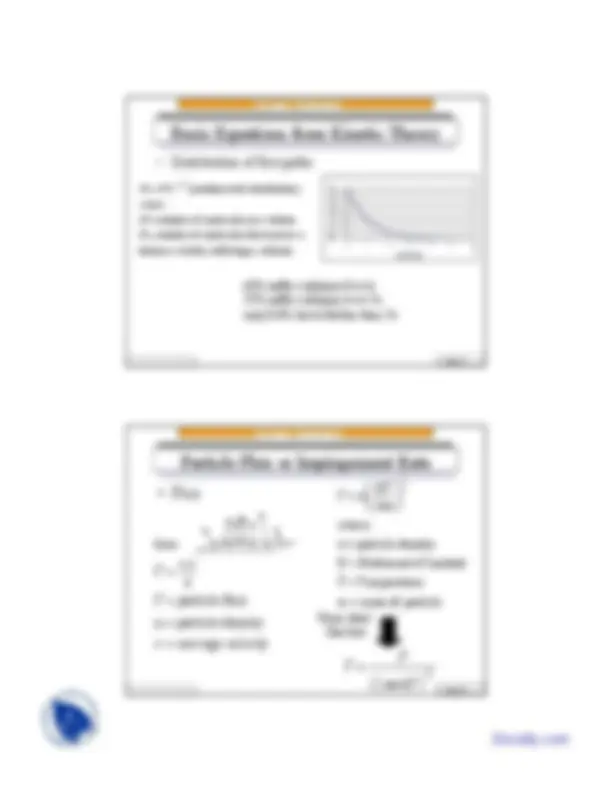
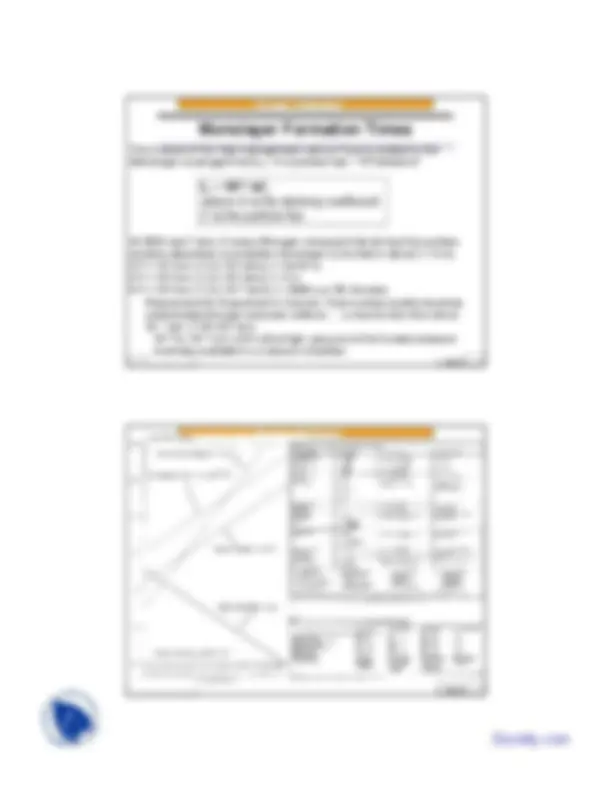
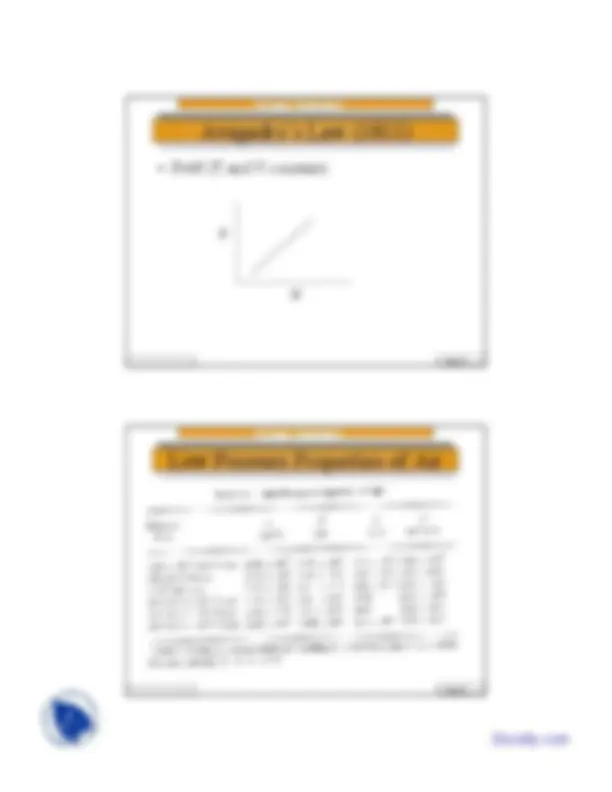
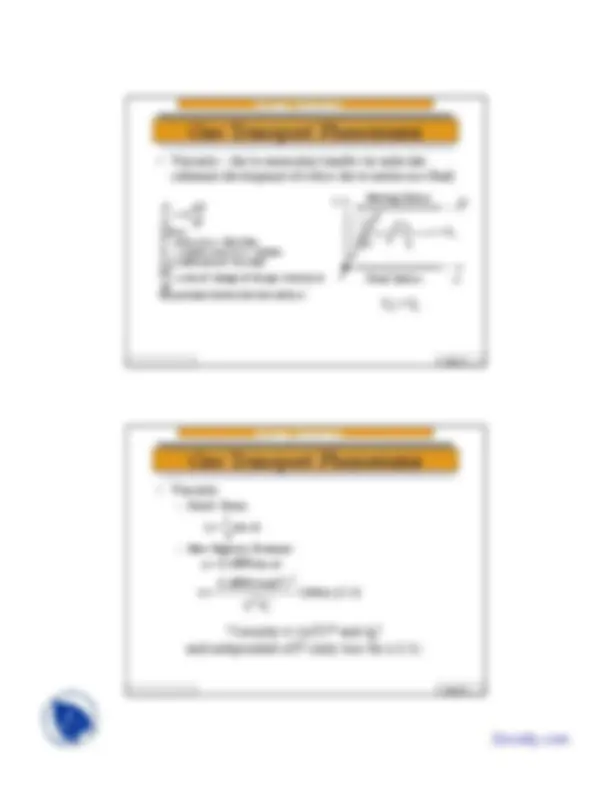
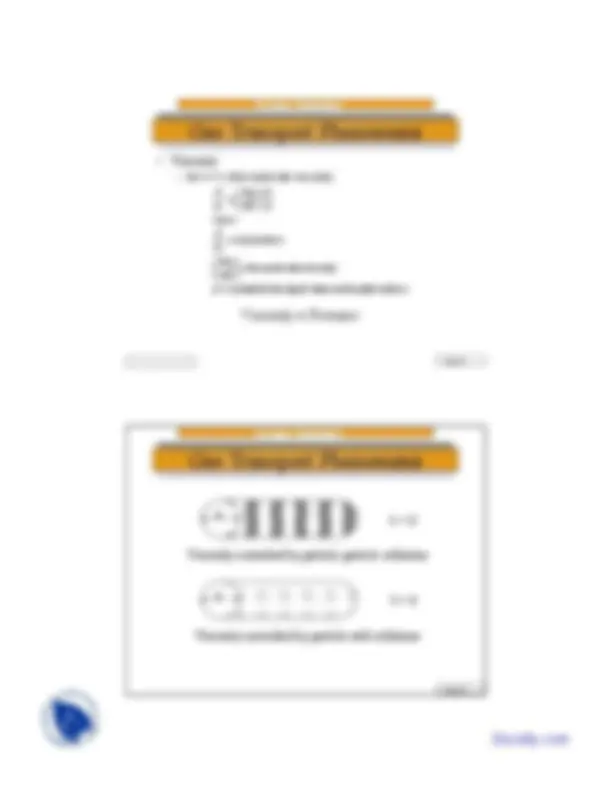
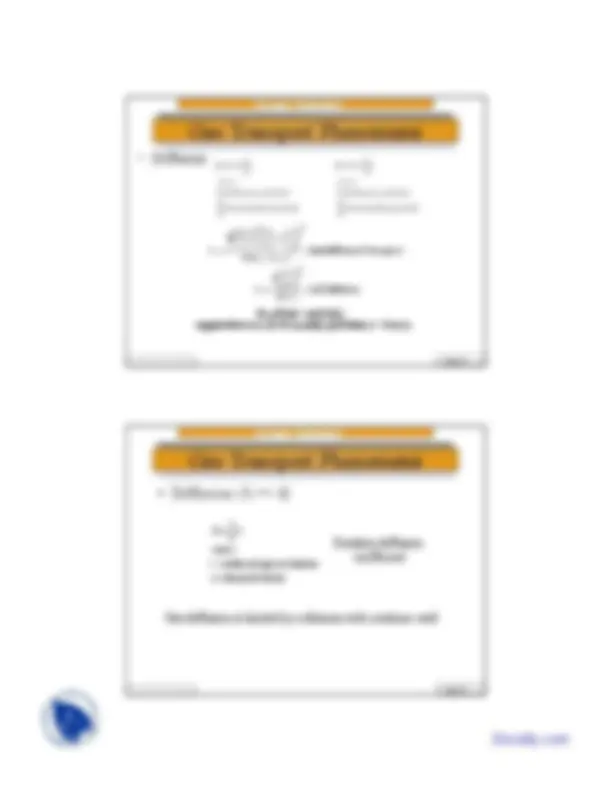
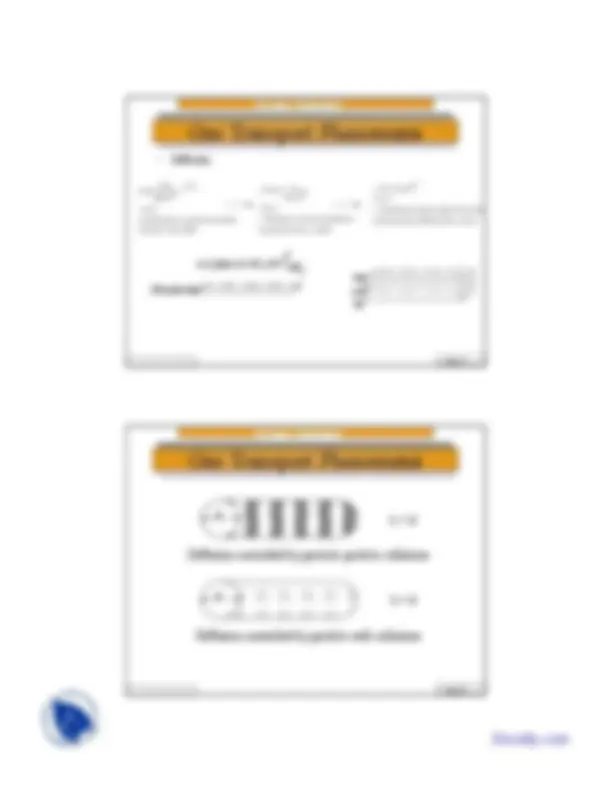


Study with the several resources on Docsity

Earn points by helping other students or get them with a premium plan


Prepare for your exams
Study with the several resources on Docsity

Earn points to download
Earn points by helping other students or get them with a premium plan
Community
Ask the community for help and clear up your study doubts
Discover the best universities in your country according to Docsity users
Free resources
Download our free guides on studying techniques, anxiety management strategies, and thesis advice from Docsity tutors
These are the Lecture Slides of Thin Film Materials Processing which includes Vaporization, Vapor Pressure Curves, Thermal Desorption, Molecular Binding Energy, First Order Desorption, Desorption Rate, Real Surfaces, Diffusion of Gas Particles etc. Key important points are: Kinetic Theory of Gas, Vacuum Basics, Atmospheric Pressure, Gas Properties, Velocity Distribution, Maxwell Boltzmann Distribution, Mass Dependencies, Average Particle Velocity, Peak Velocity
Typology: Slides
1 / 19

This page cannot be seen from the preview
Don't miss anything!












Page 1
Vacuum Technology
Page 2
Atmospheric Pressure = 101,323.2 Pa (760 torr) (133Pa = 1 torr)
Page 3
5
3
3
Vacuum Technology
Page 4
Page 7
Vacuum Technology
Page 8
Basic Expressions from Maxwell Boltzmann Distribution
m massofparticle
T Temperature
K Boltzman'sConstant
averagevelocity
1
where
m
Page 9
Basic Expressions from Maxwell Boltzmann Distribution
m
kT v (^) p
1 / 2
Vacuum Technology
Page 10
0
0 200 400 600 800 1000 1200 Velocity (m/s)
dn/dV
dN/dV peak average RMS
Page 13
For molecules traveling with velocity{Vx}, the distance they can travel in time interval ∆ t is: {Vx} ∆ t If they move towards the wall of area A and the number density is n (=N/V), the number of molecules that strike the wall in time ∆ t is: n•A{Vx} ∆ t, but half of the molecules move towards the surface, half away from the surface: (1/2)n•A{Vx} ∆ t When a molecule collides with the surface, it’s momentum changes from mV (^) x to -mVx (total 2mVx) (m=MW/N (^) A), hence the total momentum change is: = [(number of collisions)] • (momentum change per collision) = [(1/2)n•A{Vx} ∆ t] • (2m{Vx}) = n•m•A{Vx^2 } ∆ t
Pressure and Molecular Velocity
Vacuum Technology
Page 14
Since force is the rate of change of momentum: f = n•m•A{Vx^2 }
Pressure is the force per unit area: P = n•m•{Vx^2 }
Generalizing: {V^2 }= {Vx^2 } + {V (^) y^2 } + {Vz^2 } = 3 {Vx^2 }, P = (1/3)n•m{V^2 }
Generally VRMS is used here
1 atm = 1013 mbar = 1.013 bar = 760 mmHg 1 atm = 760 torr = 101,325 Pa = 101,325 Nm -
Pressure and Molecular Velocity
3
m
kT v (^) rms
P=nkT (where n=N/V)
Dr. Philip D. Rack Page 15
The time a molecule spends between collisions is 1/ Z.
A molecule of diameter “do ” sweeps out a collision cylinder of cross-sectional area: σ = πd 02 , and length {V}∆t, during period ∆t. For two colliding objects we must really take into account their relative speeds (not one fixed, one moving). The collision frequency Z (per unit time) per molecule is = √ 2 • σ{V}•n
Collision Frequency
Vacuum Technology
Page 16
↑ Pressure (↑ particle density) -- ↓ mean free path
The Mean Free Path
Mean free path (l) - average distance a particle travels before it collides with another particle:
n gas particle density
moleculardiameter
:
2
1 (^122)
=
=
=
o
o
d
where
π d n
λ
( )
λ mm =
(for air at room temperature)
Page 19
Monolayer Formation Times
The inverse of the Gas impingement rate (or flux) is related to the Monolayer coverage time (t (^) c). If a surface has ~ 10 15 sites/cm^2
At 300K and 1 atm, if every Nitrogen molecule that strikes the surface remains absorbed, a complete monolayer is formed in about t = 3 ns. If P = 10 -3^ torr (1.3 x 10 -6^ atm), t = 3x10 -3^ s If P = 10 -6^ torr (1.3 x 10 -9^ atm), t = 3 s If P = 10 -9^ torr (1.3 x 10 -12^ atm), t = 3000 s or 50 minutes
t (^) c = 10^15 /s Γ, where S is the sticking coefficient Γ is the particle flux
Requirement for Experiment in Vacuum: Clean surface quickly becomes contaminated through molecular collision, ∴ p must be less than about 10 -12^ atm (7.67x10 -5^ torr). 10 -10^ to 10 -11^ torr (UHV-ultra high vacuum) is the lowest pressure routinely available in a vacuum chamber.
Vacuum Technology
Page 20
Page 21
Vacuum Technology
Page 22
Page 25
Vacuum Technology
Page 26
Page 27
thispositionbetwen thetwosurfaces
rateofchangeofthegasvelocityat dy
dU
coefficientofviscosity
A surfaceareain x-zplane
forcein x-direction
:
xz
=
=
=
=
=
η
η
x
xz
x
F
where
dy
dU A
F
z
y
x
Moving Surface U 1
U
Fixed Surface
Axz
2
1
Vacuum Technology
Page 28
η nm νλ 3
η = 0. 4999 nm νλ
(wheny )
(^322)
(^12) λ π
η = ≥ d o
mkT
Viscosity ∝ (mT) 1/2^ and d (^) o^2 and independent of P (only true for y ≥ λ)
Page 31
z
y
x
Hot Surface (T 2 )
T
Cold Surface (T 1 )
Axz
2
1
dy temperaturegradient T 1 < T 2
dT
specificheatatconstant volume
K heatconductivity c
H heatflow
:
v
=
=
= =
=
=
c v
where
dy H AKdT
η
Heat Flow ∝ (mT) 1/2^ and d (^) o^2 and independent of P (only true for y ≥ λ)
Vacuum Technology
Page 32
K = η c v
specificheatatcostant vo lume
specificheatatcostantpressure
c
c
:
( 9 5 ) 4
1
v
P
=
=
=
= −
v
p
v
c
c
where
K c
γ
γ η
333 (triatomic molecule)
667 (monatomicmolecule)
4 (diatomicmolecule) =
=
= γ
γ
γ
Page 33
andtransferenergy)
(howeffectivethemoleculesabsorb
free-molecularheatconductivity
absorbenergy)
(howeffectivethesurfacestransferand
accomodationcoefficient
heatflow
:
( )
0
0 2 1
Λ =
=
=
= Λ −
α
α
E
where
E PT T
Heat Flow ∝ Pressure
Vacuum Technology
Page 34
d λ < d
d λ > d
Heat Flow controlled by particle-particle collisions
Heat Flow controlled by particle-wall collisions
Page 37
xy
z
2N molecules
x-y plane at t=0, z=
z= -dz
+dz
betweenzandz dz
numberofmoleculeslocated
:
( )
( 4 ) (^12)
2
=
= −
dn
where
e Dt dn Ndz z Dt π
∞
=
=
locatedbetweenz and
fractionofmoleculesthatare
:
2 ( )
0
(^12) 0
f
where
Dt
f erfc z
moleculeshavediffusedafteratime t
minimumdistancethat10%ofthe
:
0
=
z
where
z Dt
Vacuum Technology
Page 38
d λ < d
d λ > d
Diffusion controlled by particle-particle collisions
Diffusion controlled by particle-wall collisions